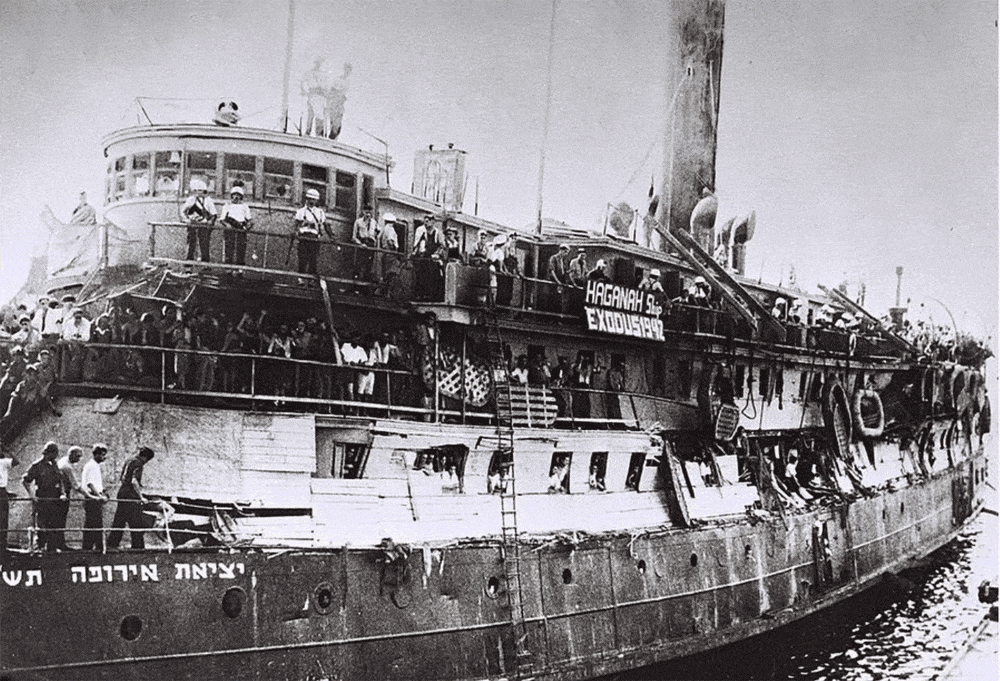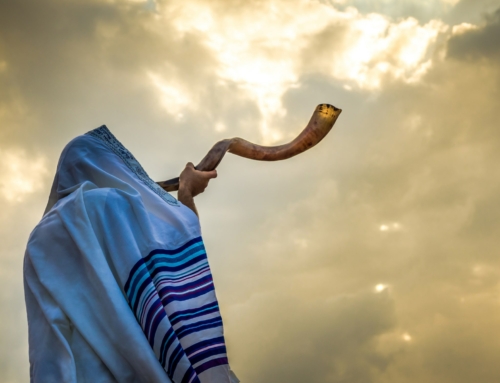Via The Jewish Times and Jerry Klinger
Seventy years ago, a ship once almost abandoned for scrap set out from Baltimore’s harbor for a six-month journey to Europe, where it would pick up thousands of Jewish refugees fleeing the wreckage of World War II and take them to Israel.
As British troops began to board in Haifa, wooden planks carrying the ship’s name President Warfield were flipped over to reveal the ship’s new name, “Haganah Ship – Exodus 1947.” The Jewish anthem “Hatikvah” (“The Hope”) was sung repeatedly by the ship’s beleaguered passengers.
It was the ship that helped to launch a nation, and an Israeli sculptor has captured that idiom in a new memorial in Haifa.
The memorial dedicated this month in Israel is largely a result of the tenacity of Maryland resident Jerry Klinger. The memorial to the ship, its crew and its passengers was dedicated in Haifa at the same port where British destroyers intercepted, attacked and prevented the ship from docking and delivering its human cargo.
Klinger, 69, was first captivated by the story of the Exodus 1947 after watching the 1960 film “Exodus.”
As the young son of Buchenwald and Bergen-Belsen survivors, Klinger also read “Exodus” by Jewish Baltimore-born Leon Uris, whose 1958 bestseller was inspired by the Exodus 1947 saga. Klinger credits the book with giving him insights into how the Jewish underground in British-controlled Palestine put pressure on British occupiers.
The true story of the Exodus 1947 helped turn the tide of sentiment toward the hundreds of thousands of Jewish refugees seeking sanctuary after World War II and their quest for a Jewish state — what would become, in 1948, the new nation of Israel.
However, the saga of the ship was largely forgotten over the ensuing busy decades, and although there are memorials to the ship at Baltimore’s Inner Harbor, in France, in Italy and even in Germany, there had never been a memorial in the one place the refugees were striving to reach — Israel.
A former executive with Merrill Lynch, Klinger founded the Jewish American Society for Historic Preservation in 1999. A few years later, Klinger worked with Israel Prime Minister Benjamin Netanyahu to bring the remains of Col. John Henry Patterson, the so-called godfather of Israeli Defense Forces, to Israel for reburial. It was then he met Israeli sculptor Sam Philipe, who designed and made the memorial in Haifa.
Sam Philipe, a well-known Israeli sculptor, and fifth-generation Jerusalemite, had already made his mark with sculpting projects at home and abroad when he met Klinger and heard his big idea.
Built on a base of Jerusalem stone, the memorial combines a bronze sculpture of Israel supporting a replica Exodus anchor with interpretive plaques detailing the ship’s saga in Hebrew, English and Arabic. The base of the statue is inscribed with “The Ship That Launched a Nation.”








Leave A Comment